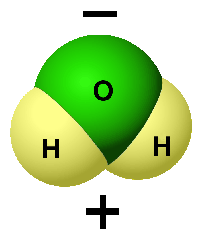
RF Heating
HOW RF HEATING WORKS
The unique structure of the polar water molecule, H2O, is the basis for the thermal response of water when subjected to an alternating RF energy field.
In a radio frequency heating system the RF generator creates an alternating electric field between two electrodes. The material to be heated is conveyed between the electrodes causing polar water molecules in the material to continuously reorient to face opposite electrodes. Friction resulting from this molecular movement causes the material to rapidly heat volumetrically.
The very rapid and precisely controllable RF heating process offers the advantages of reduced processing times, consistent quality, and simplified control.
The very rapid and precisely controllable RF heating process offers the advantages of reduced processing times, consistent quality, and simplified control.
The animated illustration on this page depicts a radio frequency heating system with material between the electrodes. The figures in the material represent polar water molecules. Note how the polar water molecules move to face the oppositely charged electrode when the electric field reverses as the RF generator oscillates, as shown by the moving wave form.





